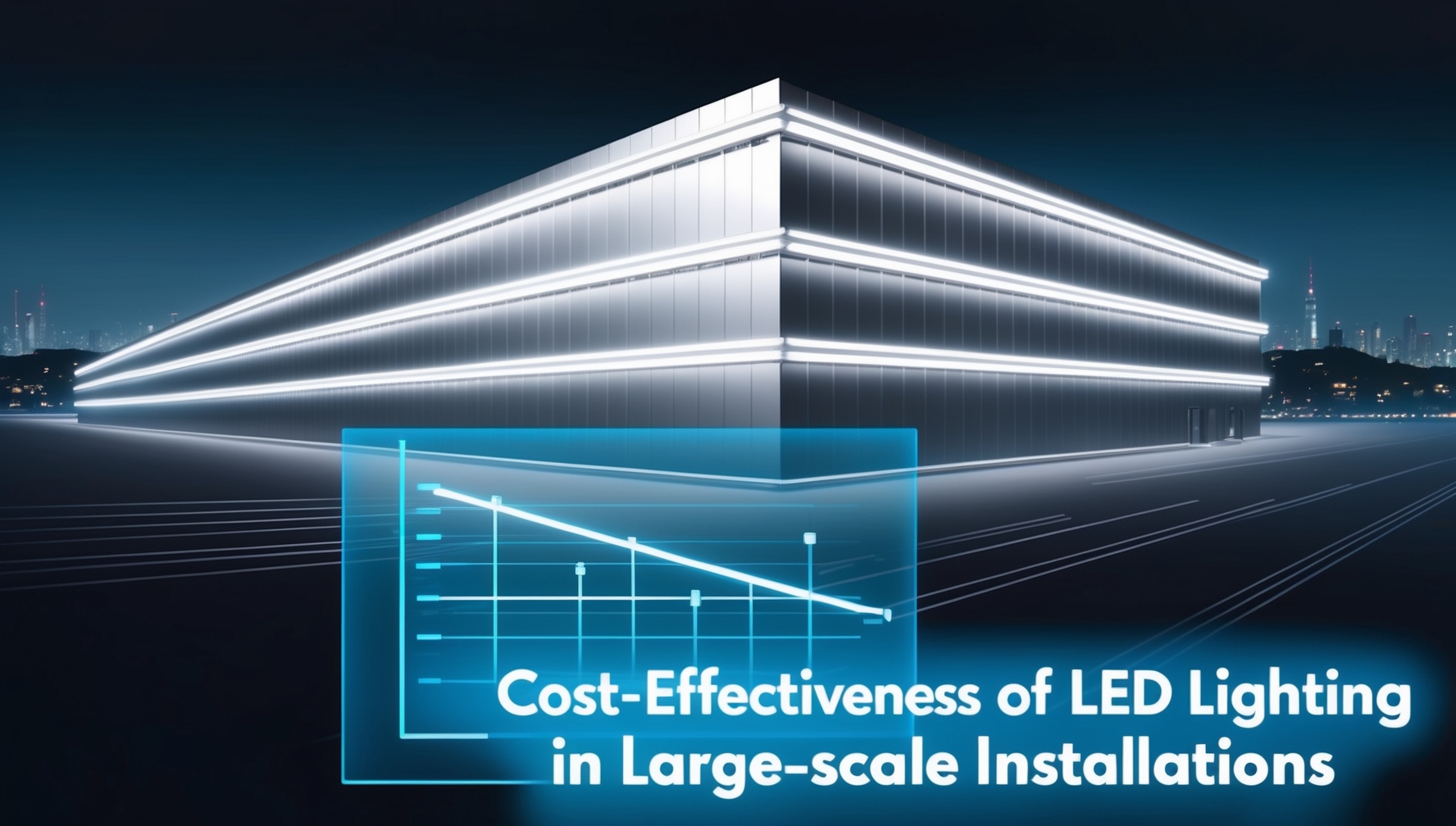When it comes to large-scale installations, such as commercial buildings, industrial facilities, or urban infrastructure projects, the cost-effectiveness of lighting solutions is a crucial factor. Traditional lighting systems, while often less expensive upfront, can lead to significant ongoing expenses due to high energy consumption, frequent maintenance, and shorter lifespans. In contrast, LED lighting has emerged as a cost-effective alternative, offering long-term savings and numerous benefits. This article explores the cost-effectiveness of LED lighting in large-scale installations, highlighting key factors that make LEDs a smart investment.
Energy Efficiency and Reduced Operating Costs
One of the most compelling reasons to choose LED lighting for large-scale installations is its exceptional energy efficiency. LEDs consume significantly less electricity compared to traditional lighting options like incandescent, halogen, or fluorescent bulbs. This reduced energy consumption translates directly into lower utility bills, which can make a substantial difference in the operating costs of large facilities.
For example, in LED lighting in commercial spaces, such as large office buildings that require continuous lighting in common areas, parking garages, and exterior spaces, switching to LED lighting can reduce energy usage by up to 70%. Over time, these savings add up, making the initial investment in LED lighting more than worthwhile.
Longer Lifespan and Lower Maintenance Costs
LED lights have a much longer lifespan compared to traditional bulbs, often lasting 25,000 to 50,000 hours or more. In large-scale installations, where the cost of replacing and maintaining lighting fixtures can be significant, the longevity of LEDs offers a major advantage. Fewer replacements mean lower labor costs and less frequent purchases of new bulbs, reducing the overall maintenance budget.
In environments such as industrial plants, where LED lighting for industrial applications plays a crucial role in ensuring consistent and reliable illumination, the durability and longevity of LED lights minimize disruptions and ensure consistent lighting performance with minimal upkeep.
Decreased Cooling Costs
Traditional lighting sources, particularly incandescent and halogen bulbs, emit a considerable amount of heat. In large-scale installations, this excess heat can lead to increased cooling costs, especially in climate-controlled environments like offices, data centers, or healthcare facilities. LED lights, on the other hand, emit very little heat, reducing the load on air conditioning systems and contributing to overall energy savings.
By lowering cooling demands, LEDs not only cut down on energy costs but also create a more comfortable environment for occupants, which can enhance productivity and reduce wear and tear on HVAC systems.
Environmental Impact and Sustainability
Beyond direct cost savings, LED lighting offers environmental benefits that can be financially advantageous in the long run. LEDs are more environmentally friendly than traditional lighting because they contain no hazardous materials like mercury and are fully recyclable. Additionally, the energy efficiency of LEDs contributes to lower greenhouse gas emissions, helping large-scale installations meet sustainability goals and comply with environmental regulations.
For businesses and organizations that prioritize sustainability, investing in LED lighting can enhance their brand reputation, attract eco-conscious customers, and potentially qualify them for green building certifications or government incentives.
Flexibility and Smart Lighting Controls
LED lighting systems often come with advanced control options that can be customized to optimize energy usage. Features such as dimming, motion sensors, and daylight harvesting allow large-scale installations to use lighting more efficiently, further reducing costs. For instance, motion sensors can automatically turn off lights in unoccupied areas, while daylight sensors adjust lighting levels based on natural light availability.
Smart lighting controls not only save energy but also offer flexibility in creating the right lighting environment for different tasks or times of day, enhancing comfort and productivity while minimizing unnecessary energy consumption.
Return on Investment (ROI)
The initial cost of LED lighting may be higher than traditional lighting options, but the long-term return on investment (ROI) is where LEDs truly shine. When factoring in energy savings, reduced maintenance costs, and the potential for decreased cooling expenses, the payback period for LED lighting in large-scale installations is often within a few years.
After the initial payback period, the continued savings contribute to the bottom line, making LED lighting a financially sound choice for large-scale projects. Furthermore, as LED technology continues to advance, the cost of LEDs has been decreasing, making them an even more attractive option for cost-conscious organizations.
Government Incentives and Rebates
In many regions, government incentives and rebates are available to encourage the adoption of energy-efficient technologies like LED lighting. These financial incentives can further improve the cost-effectiveness of LED lighting in large-scale installations, offsetting the initial investment and accelerating the payback period.
Organizations considering a large-scale lighting upgrade should explore available incentives, which can significantly reduce the upfront costs and enhance the overall ROI of their LED lighting projects.
Conclusion: The Smart Choice for Large-Scale Installations
LED lighting is a cost-effective solution for large-scale installations, offering substantial savings through reduced energy consumption, lower maintenance costs, and decreased cooling expenses. With a long lifespan, environmental benefits, and the potential for government incentives, LEDs provide a strong return on investment, making them the smart choice for businesses and organizations looking to improve their bottom line while promoting sustainability.
